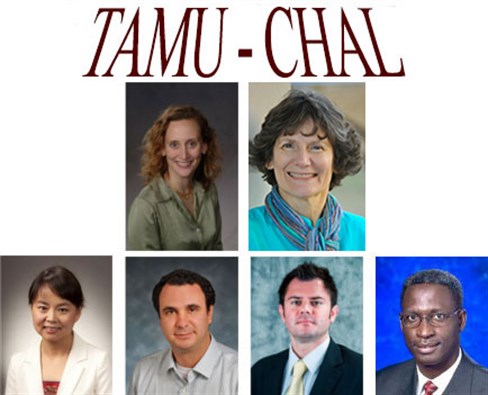 Technology that creatively and intelligently understands and responds to human behavior and the environment can improve health. That is the reason Dr. Tracy Anne Hammond, associate professor and Charles H. Barclay Jr. '45 College of Engineering Faculty Fellow in the Department of Computer Science and Engineering and director of the Sketch Recognition Lab in the Dwight Look College of Engineering at Texas A&M University, is establishing with other university collaborators the Texas A&M University Coalition for Healthy Active Living (TAMU-CHAL).
Technology that creatively and intelligently understands and responds to human behavior and the environment can improve health. That is the reason Dr. Tracy Anne Hammond, associate professor and Charles H. Barclay Jr. '45 College of Engineering Faculty Fellow in the Department of Computer Science and Engineering and director of the Sketch Recognition Lab in the Dwight Look College of Engineering at Texas A&M University, is establishing with other university collaborators the Texas A&M University Coalition for Healthy Active Living (TAMU-CHAL).
TAMU-CHAL will "engineer technologies and techniques for data collection and analyses, facilitate new forms of health research and analyses, and enable novel lines of health interventions, monitoring, and promotion for targeted populations of at-risk individuals," said Hammond.
The Texas A&M Engineering Experiment Station, the Texas A&M College of Engineering, the Texas A&M University Division of Research, the Texas A&M College of Geoscience, and the Texas A&M Health Science Center School of Public Health have joined forces in this effort. Hammond envisions that TAMU-CHAL and the new coalition will provide “the perfect opportunity to integrate multiple perspectives and disciplines to improve public and individual health, health care system and delivery, and the value of health care solutions.”
Regents and Distinguished Professor Marcia Ory, Ph.D. in the Department of Health Promotion and Community Health Sciences and director of the Program on Healthy Aging at the Texas A&M School of Public Health will serve as co-PI of the seed grant and sees TAMU-CHAL as “the perfect opportunity to integrate multiple perspectives and disciplines to improve public and individual health, health care system and delivery, and the value of health care solutions.”
Dr. Daniel W. Goldberg, Ph.D., an assistant professor in the Department of Geography at Texas A&M University, envisions that “technology will help health professionals have a greater understanding on the impact of place on a person’s health.”
The planned coalition has also garnered support from clinical partners at Baylor Scott & White Health in Temple Texas. With the escalating advances in health technologies from sensors to medical records, a TAMU-CHAL, said Hammond, "would serve as a research, education, outreach, and clinical nucleus within which multidisciplinary research teams can be empowered to develop, test, and deploy new techniques and strategies which exploit this new ecosystem of data, services, and sensors to improve public and individual health.">
Several pilot studies are currently in development including testing the efficacy of health tools for assessing health behaviors, improving patient-physician interactions, and enhancing healthy lifestyle behaviors. Another project attempts to automatically recognize user’s exercise patterns and suggests specific changes to a person’s daily activity. While a third study is examining innovative ways of testing environmental impacts on the spatial and temporal patterning of physical activity.
The multidisciplinary project team includes Hammond, Ory, Goldberg, Samuel Forjuoh, M.D., director of research in the Department of Family and Community Medicine at Baylor Scott & White Health in Temple, and two additional professors from the Texas A&M School of Public Health: Associate Professor Yan Hong, Ph.D. and Assistant Professor Samuel Towne, Ph.D.
——
Photo: (l-r top row) Hammond, Ory
(l-r bottom row) Hong, Goldberg, Towne, Forjuoh